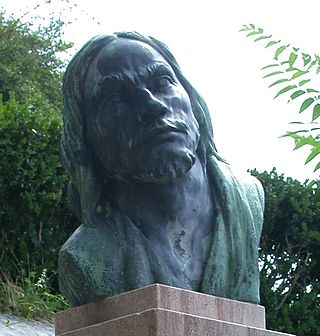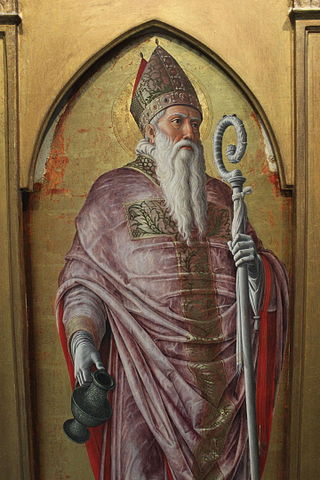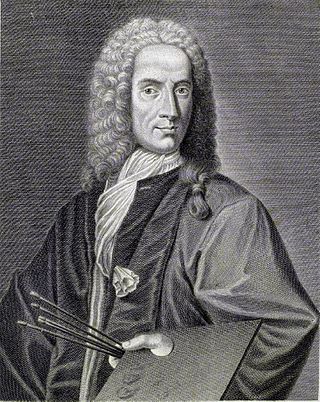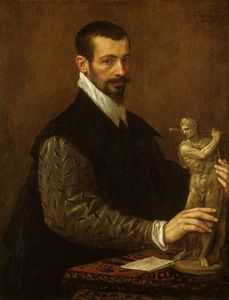
Saint Lawrence or Laurence was one of the seven deacons of the city of Rome under Pope Sixtus II who were martyred in the persecution of the Christians that the Roman Emperor Valerian ordered in 258.

Pordenone, Il Pordenone in Italian, is the byname of Giovanni Antonio de’ Sacchis, an Italian Mannerist painter, loosely of the Venetian school. Vasari, his main biographer, wrongly identifies him as Giovanni Antonio Licinio. He painted in several cities in northern Italy "with speed, vigor, and deliberate coarseness of expression and execution—intended to shock".

November 6 - Eastern Orthodox liturgical calendar - November 8

Sebastiano Ricci was an Italian painter of the late Baroque school of Venice. About the same age as Piazzetta, and an elder contemporary of Tiepolo, he represents a late version of the vigorous and luminous Cortonesque style of grand manner fresco painting.

Mattia Preti was an Italian Baroque artist who worked in Italy and Malta. He was appointed a Member of the Order of Saint John.

Justina of Padua is a Christian saint and a patroness of Padua. Her feast day is October 7. She is often confused with Justina of Antioch. She was devoted to religion from her earliest years and took the vow of perpetual virginity. When she was brought before Maximian the prefect, she remained firm against all attacks. The prefect caused her to be slain with the sword.

Prosdocimus (Prosdecimus) of Padua is venerated as the first bishop of Padua.

Antonio Zanchi was an Italian painter of the Baroque, active mainly in Venice, but his prolific works can also be seen in Padova, Treviso, Rovigo, Verona, Vicenza, Loreto, Brescia, Milano, and Bergamo, as well as Bavaria.

Saint Caesarius of Terracina was a Christian martyr. The church of San Cesareo in Palatio in Rome bears his name.

San Francesco della Vigna is a Roman Catholic church in the Sestiere of Castello in Venice, northern Italy.

Tiziano Aspetti (1559–1606) was an Italian sculptor of the Renaissance. He was born in Padua and active mainly there and in Venice. He completed both large and small sculpture in bronze. Among his large works are bronze statues in the façade of San Francesco della Vigna and of Saint Anthony and many other sculptural decorations for the Basilica of Sant'Antonio of Padua.

The Abbey of Santa Giustina is a 10th-century Benedictine abbey complex located in front of the Prato della Valle in central Padua, region of Veneto, Italy. Adjacent to the former monastery is the basilica church of Santa Giustina, initially built in the 6th century, but whose present form derives from a 17th-century reconstruction.

The Church of San Gaetano is found in the central district of Padua, and its facade was designed by the late Renaissance architect Vincenzo Scamozzi.
Francesco Nasini was an Italian painter of the Baroque period, active mainly in towns outside of Siena, Italy.

The Church of Santa Sofia is a Roman Catholic church in the city of Lendinara, in the Province of Rovigo, region of Veneto, Italy.

Santa Tecla is the Baroque-style, Roman Catholic duomo or main church in the town of Este, province of Padua, region of Veneto, Italy.

San Francesco is a Gothic-style Roman Catholic church in Deruta, province of Perugia, region of Umbria, Italy. It serves as the Duomo or main church for the community.

San Daniele is a Roman Catholic church and monastery in Padua, region of Veneto, Italy.
Francesco Bertos was an Italian sculptor known for his emotive and virtuosic small-scale pyramidal group sculpture. He worked primarily with bronze and produced many allegorical works. He was born and died in Dolo, a small town near Padua. Very little is known about Bertos' life. Historical records indicate his presence in Rome in 1693 and in Venice in 1710, with his activity documented until 1733 when he received a commission for two candlesticks for the basilica of Sant'Antonio in Padua.




















